Sodium Hydroxide Benefits for Skin: Exploring Its Role in Skincare Products
Sodium hydroxide is a potent chemical compound that we commonly encounter in various personal care products. As a strong alkali, its primary role in skincare formulations is to adjust pH levels and enhance product texture. When used in controlled concentrations, this versatile ingredient can facilitate the removal of dead skin cells, contributing to a smoother skin texture.
Despite its strength, sodium hydroxide is carefully formulated to be safe for use on the skin, fitting into the chemistry of skincare without causing excessive irritation when properly neutralized. We take advantage of the compound's properties in a variety of skincare and cosmetic products, introducing benefits such as improved moisture retention and product stability. Moreover, sodium hydroxide plays a critical role in processes such as soap making, where it saponifies fats and oils into soap and glycerin.
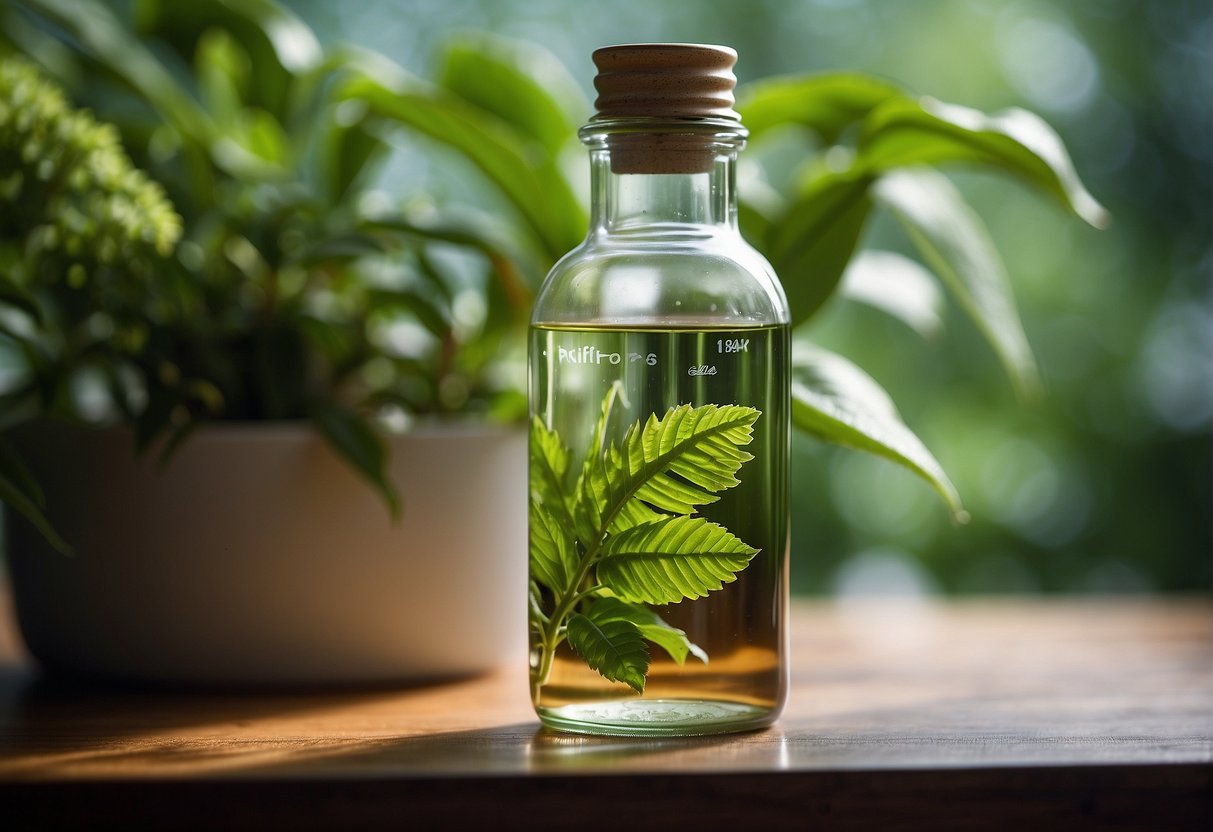
Sodium hydroxide's benefits extend beyond just skin applications, presenting environmental advantages in certain industrial processes, such as the canning industry, where it may replace other harmful chemicals. This demonstrates the chemical's utility and comparative advantage, offering a glimpse into its multifaceted role across different sectors.
Key Takeaways
- Sodium hydroxide is integral in skincare for pH adjustment and exfoliation.
- It is safe in controlled amounts and enhances the texture and efficacy of skincare products.
- Beyond skincare, sodium hydroxide offers environmental benefits in various industrial applications.
Chemical Properties and General Uses
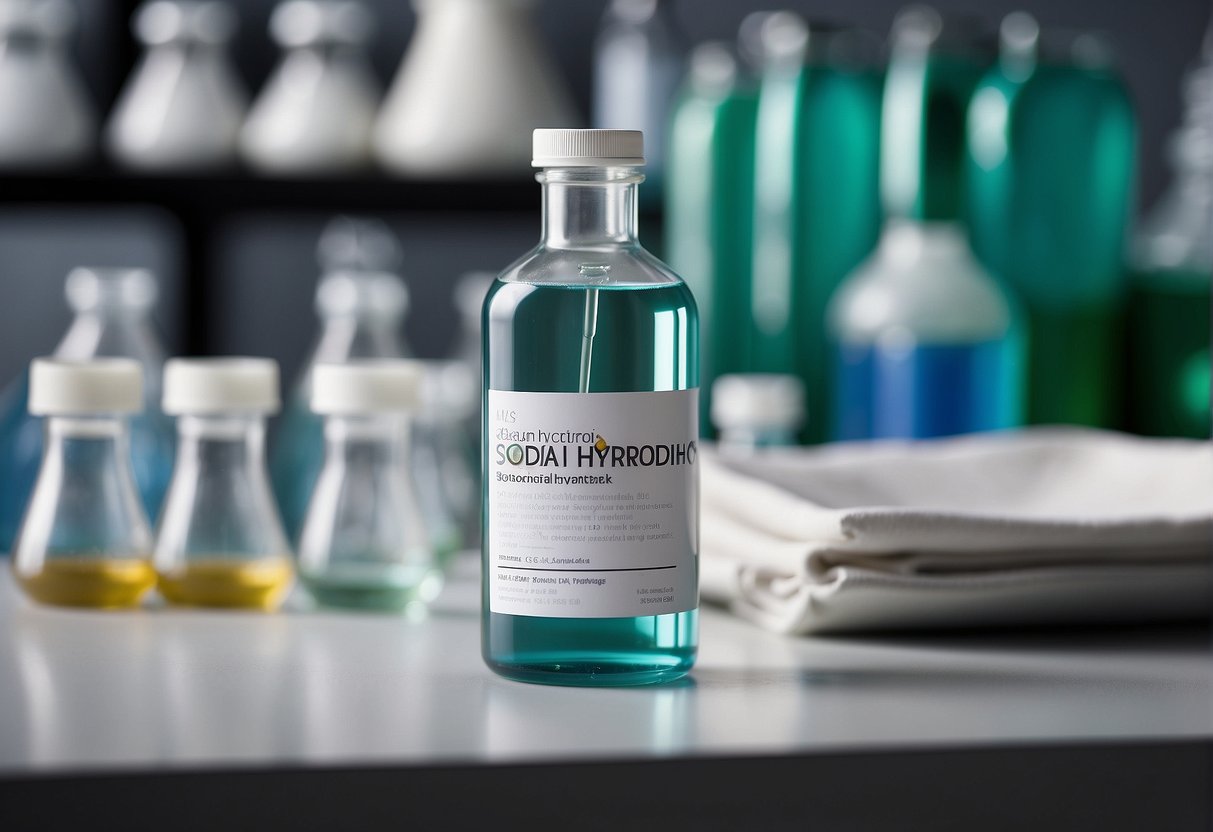
Sodium hydroxide, also known as lye or caustic soda, is a highly versatile alkali with the chemical formula NaOH. We recognize its critical role in saponification for soap-making and its use as a pH balancer in various industries.
Role in Skincare Products
Sodium hydroxide is crucial for the soap-making process. Its high pH levels facilitate the saponification reaction when combined with fats or oils, converting them into soap and glycerol. This property makes it an ideal ingredient to create a variety of cleansing products. In skincare, its role is generally limited to a pH balancer, adjusting the alkalinity of products to ensure they maintain the proper pH balance for skin compatibility.
General Industrial Applications
Beyond skincare, sodium hydroxide has widespread use in manufacturing. Its strong alkaline nature is employed in processes ranging from paper to textile production, where it acts as a powerful cleaner and processing agent. Lye’s ability to neutralize acids renders it indispensable across industries, serving not only to maintain pH balance but also to participate in chemical reactions integral to the manufacturing of countless everyday products.
Skin Health Benefits

We'll explore how sodium hydroxide benefits skin health, focusing on its role in cleansing and encouraging skin renewal.
Cleansing Effects
Sodium hydroxide is a key ingredient in the saponification process, where it reacts with fats and oils to create soap. In skincare products, such as cleansers and body creams, it effectively removes dirt and oils from the skin. We ensure that these soaps maintain a skin-friendly pH level to support the skin's natural barrier functions.
Exfoliation and Renewal
We use sodium hydroxide in specific skincare formulations to promote exfoliation. By helping to remove dead skin cells, it assists in the skin's renewal process, allowing for new cell growth. When properly formulated in exfoliants, sodium hydroxide aids in producing smoother, fresher-looking skin across various skin types. It’s important in lotions designed for exfoliation to find a balance that supports skin rejuvenation without compromising skin health.
Safety and Risks
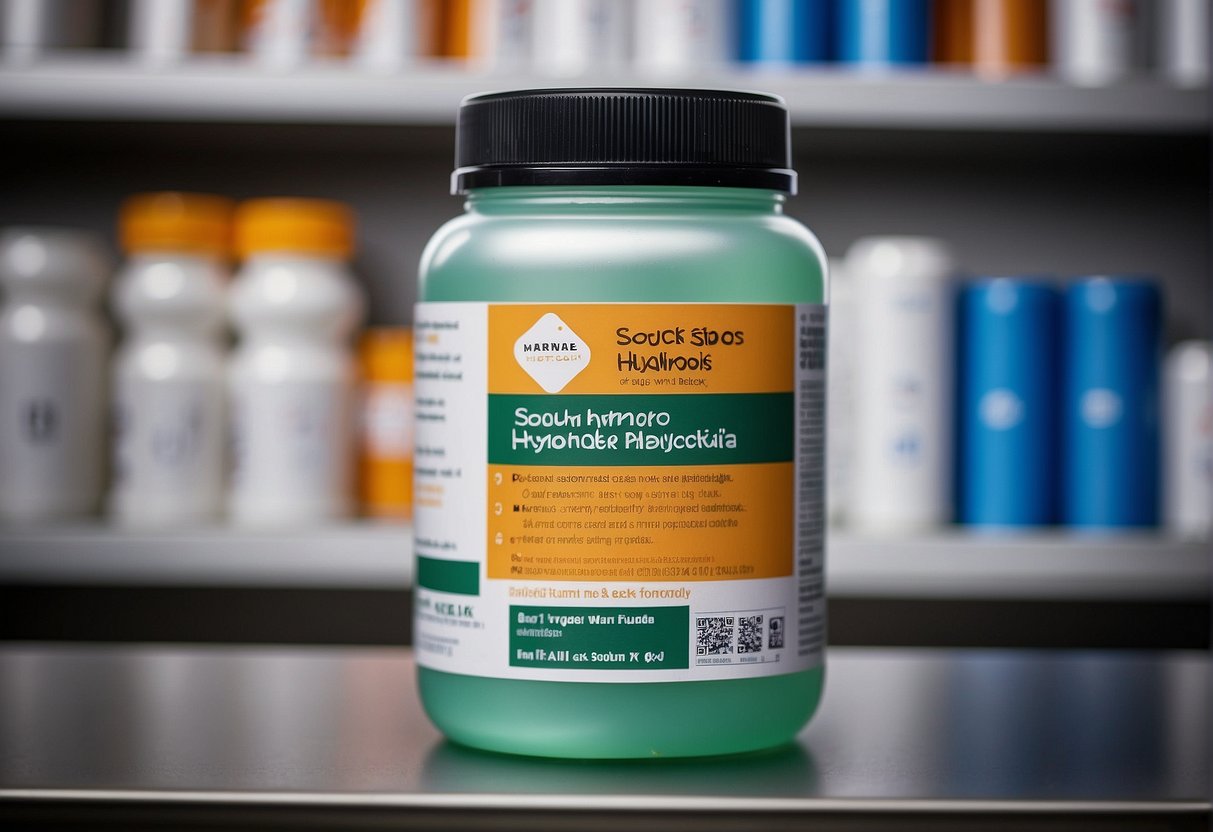
In the use of sodium hydroxide for skin applications, it is critical that we consider the proper concentration, recognize potential side effects, and always seek dermatologic guidance to mitigate risks.
Proper Concentration Usage
When using sodium hydroxide on the skin, we must maintain low concentrations to avoid irritation or chemical burns. Concentrations higher than recommended can cause severe burns and inflammation, especially on sensitive skin.
Potential Side Effects
Exposure to inappropriate concentrations of sodium hydroxide may lead to a spectrum of skin issues, from mild irritation to severe chemical burns. Symptoms can include redness, itching, rashes, hives, and inflammation. It's imperative that individuals wear gloves to prevent such side effects when handling sodium hydroxide.
Patch Testing and Dermatologic Guidance
We advise performing a patch test under the guidance of a dermatologist before applying products containing sodium hydroxide to the skin. This can reveal any sensitivity or adverse reactions, ensuring the safety of the individual's skin. A dermatologist's guidance will also help in determining the right application for those with sensitive skin and in avoiding any unnecessary exposure that could result in an irritant reaction.
Role in Personal Care Products
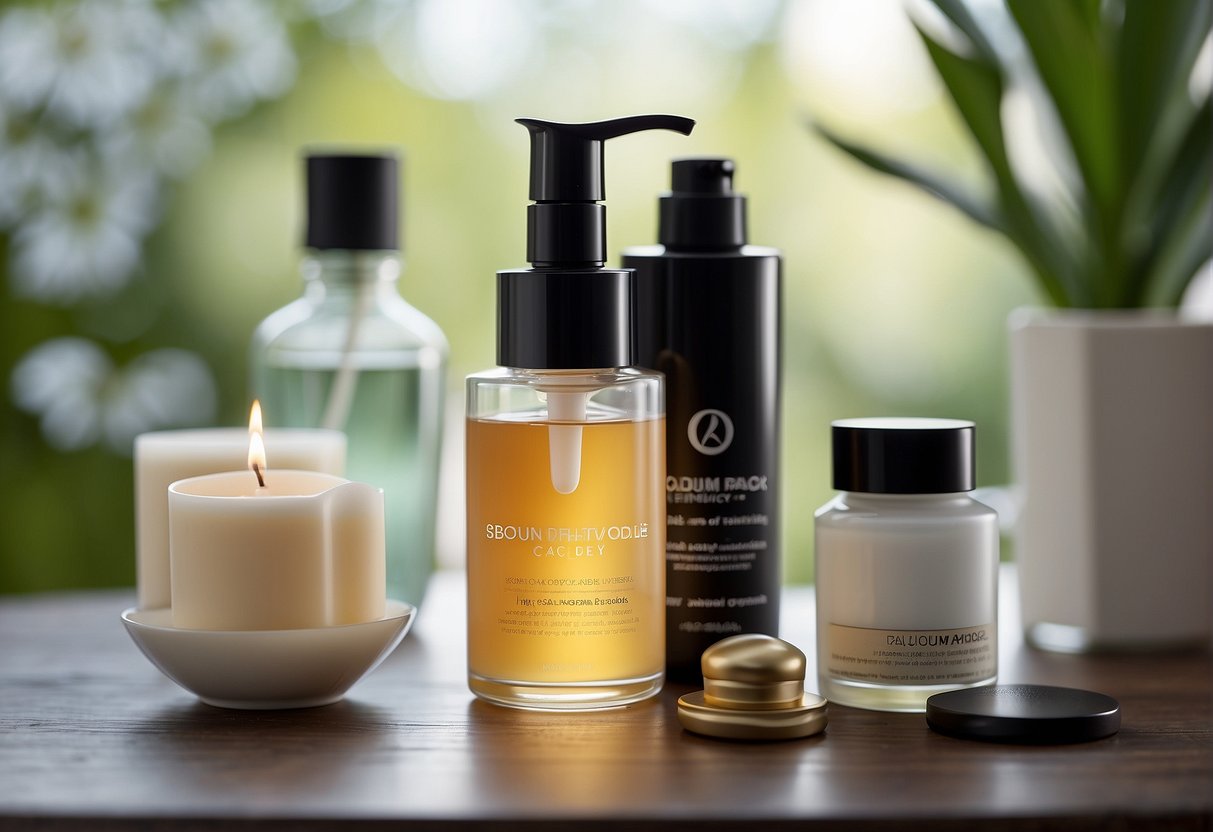
In our detailing of sodium hydroxide's contribution to personal care products, we note its critical role in maintaining pH levels and enhancing product efficacy. We will explore its specific uses in cosmetics and makeup, as well as in hair and nail care.
Cosmetics and Makeup
Sodium hydroxide is often a key ingredient in cosmetics and makeup, particularly in products designed to cleanse or exfoliate the skin. We identify its presence in creams and lotions, where it serves to establish and maintain the desired pH balance for skin health. By doing so, it ensures cosmetics deliver their intended benefits without disrupting the skin's natural acid mantle.
Hair and Nail Care
For hair care, sodium hydroxide plays a pivotal part in hair dyes and relaxers. Its core function is to alter the hair's structure to achieve the desired color or texture. Our assessment extends to nail care, finding sodium hydroxide in nail polish removers where it works to effectively break down the polish, facilitating clean removal without excessive drying or damage to the nail bed.
Comparative Advantages Over Other Chemicals
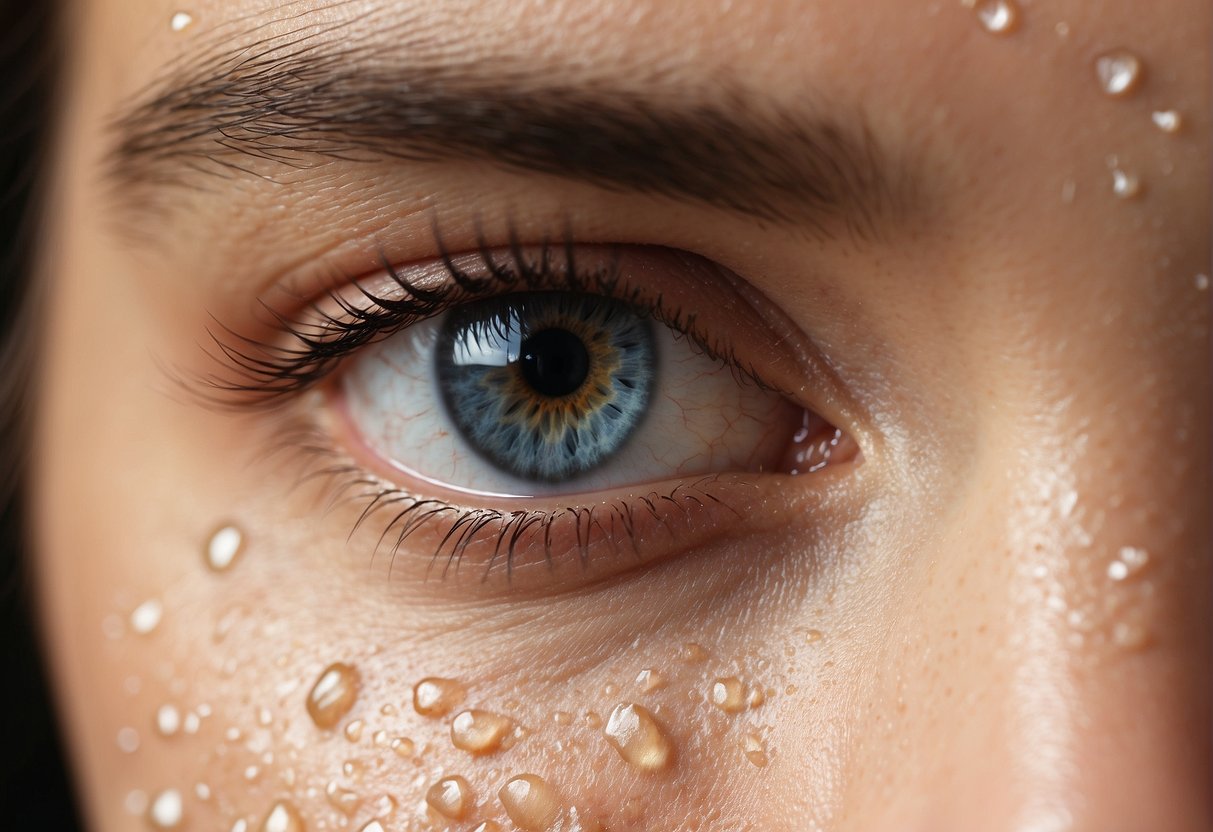
In our exploration of sodium hydroxide's application in skincare, we'll evaluate its benefits against other chemicals in terms of formulation compatibility and environmental impact.
Skin Care Formulations
Sodium hydroxide, being highly caustic, is valued for its ability to adjust the pH of skin care products to match the natural pH of skin, enhancing product stability and user experience. When compared to other alkaline agents, sodium hydroxide is:
- Odorless: Ensures no unwanted smells in formulas.
- Efficacious: Provides consistent pH levels critical for product performance, especially in soaps and detergents.
This ensures that when we use sodium hydroxide judiciously in our skincare formulas, we harness an ingredient that enhances product feel and function without introducing any odors that could detract from the consumer experience.
Environmental Considerations
Our commitment to environmental safety encourages us to compare sodium hydroxide’s impact relative to other chemicals. Sodium hydroxide stands out because:
- Neutralization: It can be neutralized with acids, reducing environmental harm.
- Non-Volatile: Its non-gaseous nature minimizes atmospheric contamination.
By integrating sodium hydroxide in our formulas, we ensure a reduced environmental footprint while maintaining effectiveness, provided that disposal and usage are managed responsibly.
Frequently Asked Questions
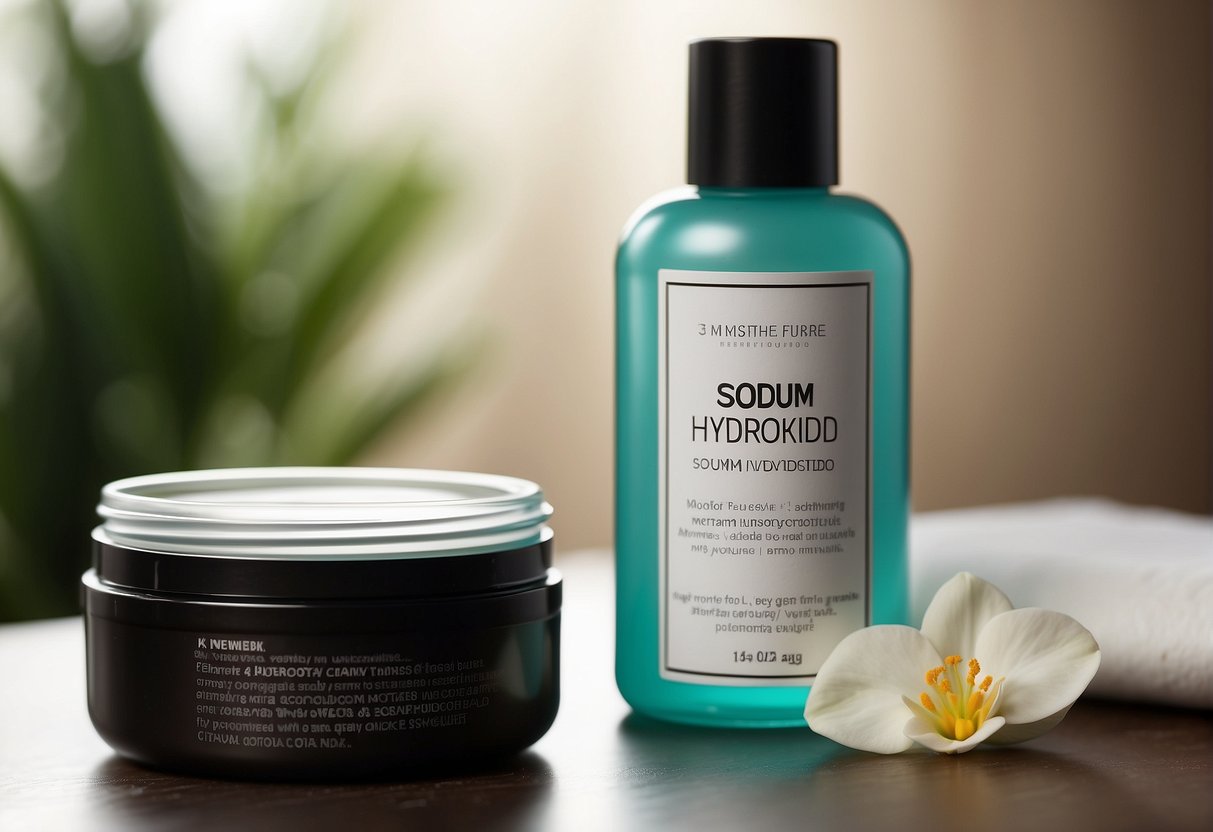
In this section, we address some of the most common inquiries regarding the use of sodium hydroxide in skin care products.
What are the potential benefits of using sodium hydroxide in skin care products?
Sodium hydroxide is often used to establish and maintain the pH level of skin care products. Its main benefit is to optimize the pH of formulations, such as creams and cleansers, which can enhance the effectiveness of other ingredients and overall product performance.
Can sodium hydroxide be used safely in soap formulations, and what precautions should be taken?
We safely utilize sodium hydroxide in soap making through the saponification process. It's crucial to carefully balance the concentration and to use proper safety measures, such as personal protective equipment, to avoid skin irritation or burns during the manufacturing phase.
How is sodium hydroxide utilized in products aimed at skin whitening, and what are its effects?
Sodium hydroxide may be found in some skin whitening products as a pH adjuster. However, its direct role in skin lightening is minimal compared to other ingredients specifically designed for melanin inhibition, and its use should ensure skin's natural pH and barrier functions are not compromised.
Does sodium hydroxide play a role in treating skin conditions such as eczema?
We recognize that maintaining the pH of skincare products is crucial, and while sodium hydroxide can help with pH balance, it does not directly treat skin conditions like eczema. Products designed for eczema typically focus on moisturization and barrier repair.
What is the relationship between sodium hydroxide and acne treatments?
In acne treatments, our role for sodium hydroxide is typically that of a pH adjuster. It is not an active acne-fighting ingredient but can support the stability and efficacy of formulations that contain active ingredients for acne treatment.
How does sodium hydroxide compare to other chemical ingredients in terms of safety and effectiveness?
Compared to other chemical ingredients, our use of sodium hydroxide focuses on its role as a pH adjuster rather than as an active ingredient for skin concerns. It is effective for this purpose when used correctly but must be handled with care due to its potential for causing irritation in high concentrations.